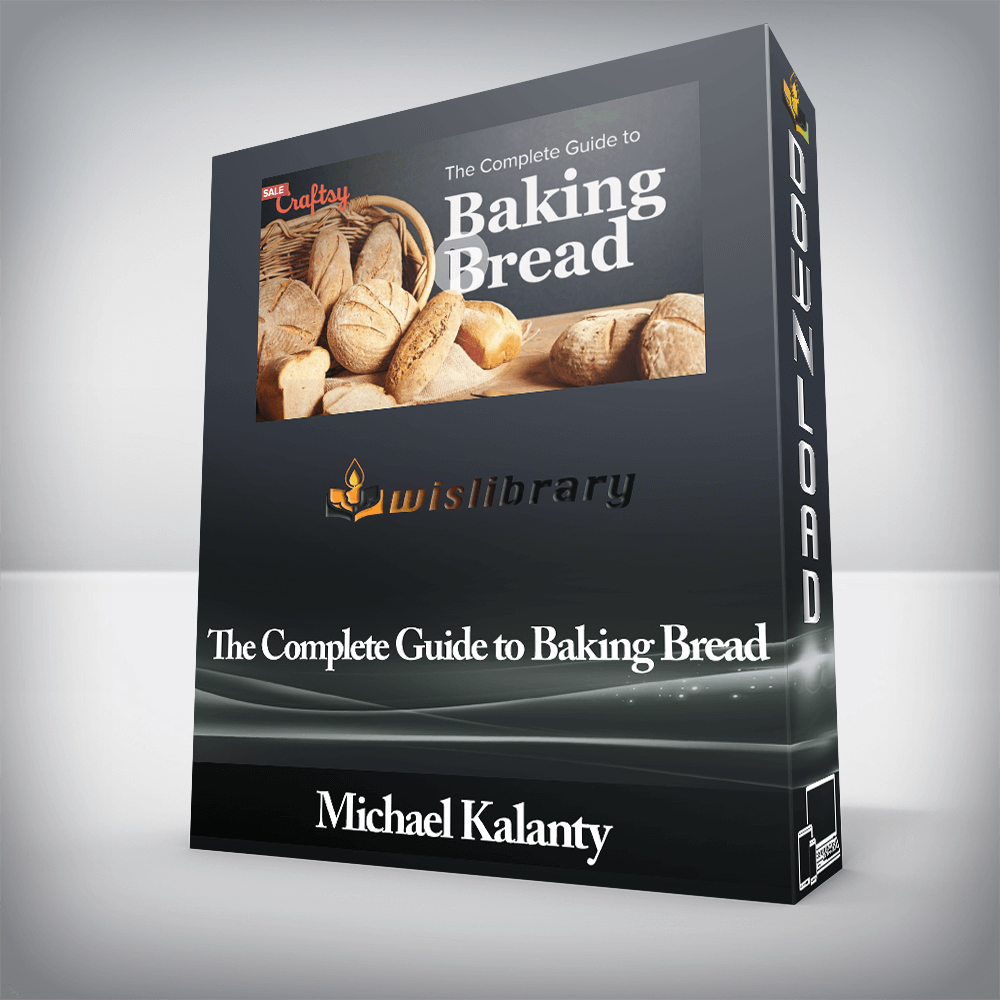

You will learn the secrets to making dough and a wide variety of breads in your own kitchen.
File Size: 8.39 GB

There is almost no smell as comforting, as universal, or as mouth-watering as that of freshly baked bread. The most recent research shows we started eating bread 14,000 years ago, so it’s hard to know whether the way bread affects us is that of a Pavlovian response “baked” into our evolution as a species, or if it just really does smell that delicious.
Bread is still one of the most popular foods on the planet, found all around the globe and in all cultures—round, knotted, woven, flat, dimpled, sweet, sour, crusty, soft—all of it beginning with the same four ingredients. In the 30 lessons of The Complete Guide to Baking Bread, you will learn the secrets to making dough and a wide variety of breads in your own kitchen. You’ll follow along at your own pace through four sections, as three renowned chefs demonstrate every step of the way: Zoë François, Michael Kalanty, and Richard Miscovich, all expert bakers, authors, and culinary educators. Their obvious skills and passion for their craft, step-by-step instructions, and ability to clarify the science—as well as the art—of bread baking will have you making bread in no time.
The Ecosystem of Bread: Meet the Magic Four
As you’ll learn in The Complete Guide to Baking Bread, no matter how complex the finished product looks, all breads can begin with just four base ingredients. While you will learn to make a wide variety of baked goods in this course—baguettes, dinner rolls, olive fougasse, naan, raisin swirl bread, caramel rolls, pizza, and more—they all begin the same way.
With Class 1—The Art and Science of Bread, Chef Kalanty starts this insightful course off by introducing you to the “ecosystem” of bread. It’s probably a little unusual to think of something we usually spread butter on and enjoy eating as an “ecosystem,” but as any good biologist will tell you, an ecosystem is simply anything comprised of living organisms and the resources needed for biological success. In bread dough, the ecosystem’s one organism is a single-celled microscopic yeast, whose environment consists of water, flour, and salt. If these three factors are in appropriate balance with the optimal temperature and amount of moisture, the organism will thrive, successfully transiting its complete life cycle. The result? Absolutely delicious bread.
As you look at the science behind bread baking, Chef Kalanty will also break down some of the components of bread dough, including gluten, proofing, and how the way you shape it affects the outcome.
From there, you’ll move into Class 2—Artisan Bread in Minutes, where Chef François demonstrates how to create your own starter dough. While some of the breads taught in this course will require the addition of other ingredients such as cheese, nuts, fruits, and vegetables, Chef François shows you this simple all-in-one-bucket dough using only the four basics, while also providing tips and insights into the process so you can better understand how chemistry turns these four basic ingredients into the magic of bread:
Now you have a starter dough that can stay in your refrigerator for two weeks, as you take pieces of it to make all sorts of breads, including sandwich breads and rolls, naan and pitas, cinnamon buns, pinwheels, and many more.
The Rise of Bread Ranges: Whole Grains and Sourdoughs
As you progress through Class 3—Secrets to Whole Grain Bread Baking, you’ll see how the first two sections of this course laid the foundation for successful bread baking. Chef Kalanty demystifies further key concepts such as ambient temperature and provides tips and practical skills for setting up your mise en place, shaping loaves, and incorporating solid garnishes such as seeds or grains. You’ll be amazed to discover how your starter can now create specialty loaves such as raisin whole wheat swirl and a multi-seed bâtard.
With Class 4—Handmade Sourdough: From Starter to Baked Loaf, Chef Miscovich helps you create and care for your starter dough and then shares essential techniques to produce versatile and mouth-watering assortments of sourdough options. You will work your way through variations, including:
And as you work with these breads and others, you’ll gain tips on the proper way to make dough using a stand mixer, explore the classic French method of mixing dough—pain au levain—and kneading by hand, and master alternative fermentation methods which speed up or slow down the process—perfect for bakers who need to fit their bread baking into busy schedules.
At its very heart, this course is a practical one. Even though professional chefs are demonstrating these lessons, everything they show you can be done in your own kitchen. They provide alternatives for ingredients, tools, or techniques that can’t be duplicated at home. No matter what your experience has been, what your skill level is at, or even what your kitchen looks like, you can create homemade bread like a professional baker. It takes an understanding of the four “magic” components, a foundational appreciation of chemistry, and all sorts of creative ideas. The Complete Guide to Baking Bread will provide all the ingredients and the recipe for success!
There are no reviews yet.
You must be <a href="https://wislibrary.org/my-account/">logged in</a> to post a review.